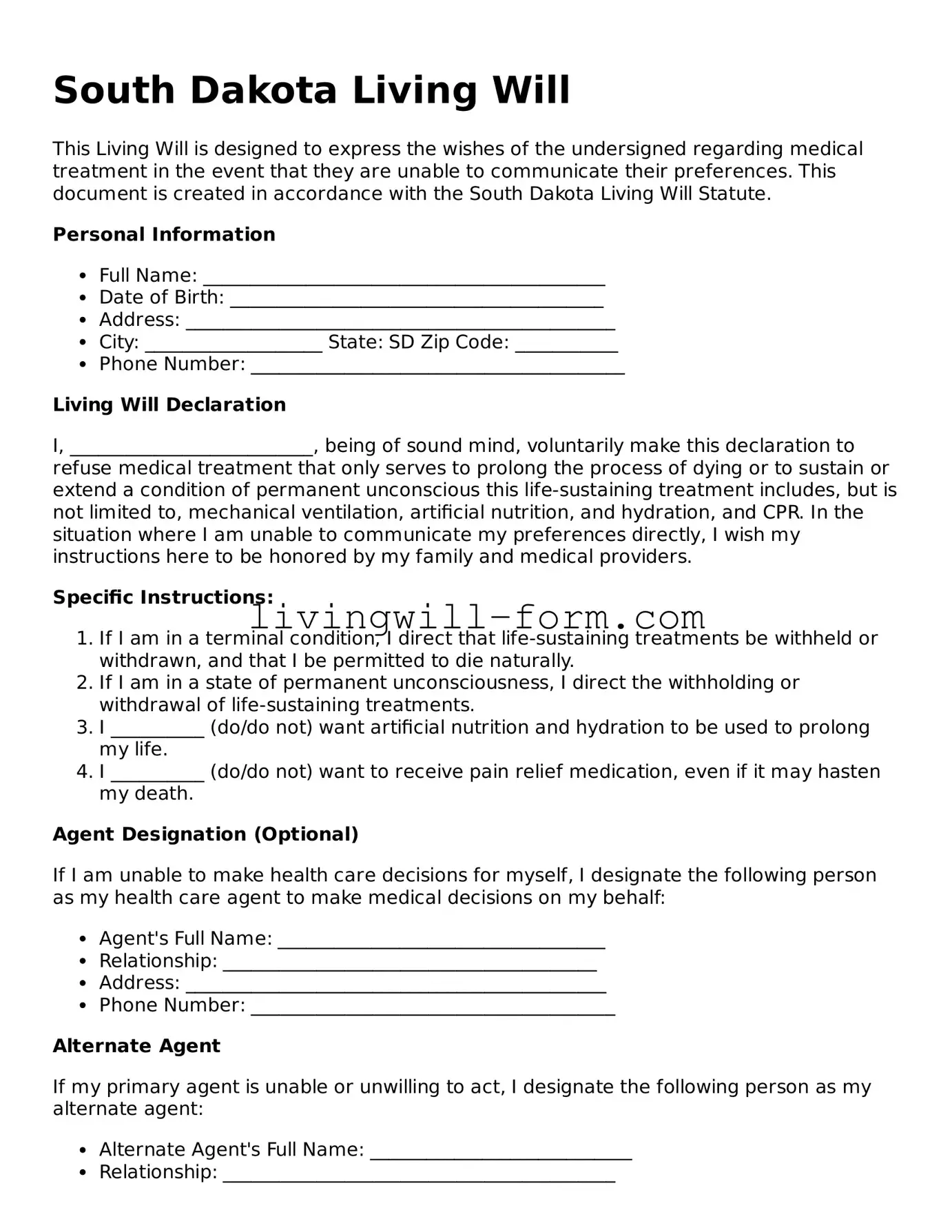South Dakota Living Will
This Living Will is designed to express the wishes of the undersigned regarding medical treatment in the event that they are unable to communicate their preferences. This document is created in accordance with the South Dakota Living Will Statute.
Personal Information
- Full Name: ___________________________________________
- Date of Birth: ________________________________________
- Address: ______________________________________________
- City: ___________________ State: SD Zip Code: ___________
- Phone Number: ________________________________________
Living Will Declaration
I, __________________________, being of sound mind, voluntarily make this declaration to refuse medical treatment that only serves to prolong the process of dying or to sustain or extend a condition of permanent unconscious this life-sustaining treatment includes, but is not limited to, mechanical ventilation, artificial nutrition, and hydration, and CPR. In the situation where I am unable to communicate my preferences directly, I wish my instructions here to be honored by my family and medical providers.
Specific Instructions:
- If I am in a terminal condition, I direct that life-sustaining treatments be withheld or withdrawn, and that I be permitted to die naturally.
- If I am in a state of permanent unconsciousness, I direct the withholding or withdrawal of life-sustaining treatments.
- I __________ (do/do not) want artificial nutrition and hydration to be used to prolong my life.
- I __________ (do/do not) want to receive pain relief medication, even if it may hasten my death.
Agent Designation (Optional)
If I am unable to make health care decisions for myself, I designate the following person as my health care agent to make medical decisions on my behalf:
- Agent's Full Name: ___________________________________
- Relationship: ________________________________________
- Address: _____________________________________________
- Phone Number: _______________________________________
Alternate Agent
If my primary agent is unable or unwilling to act, I designate the following person as my alternate agent:
- Alternate Agent's Full Name: ____________________________
- Relationship: __________________________________________
- Address: _______________________________________________
- Phone Number: _________________________________________
Signatures
This document is signed on this _____ day of ___________, 20____.
__________________________________
Signature of Declarant
__________________________________
Print Name of Declarant
Witnesses
This Living Will must be signed by two witnesses who affirm that the declarant is known to them, appears to be of sound mind, and not under duress, fraud, or undue influence.
__________________________________
Signature of Witness #1
__________________________________
Print Name of Witness #1
__________________________________
Signature of Witness #2
__________________________________
Print Name of Witness #2
This document has been executed in accordance with the laws of the State of South Dakota.
